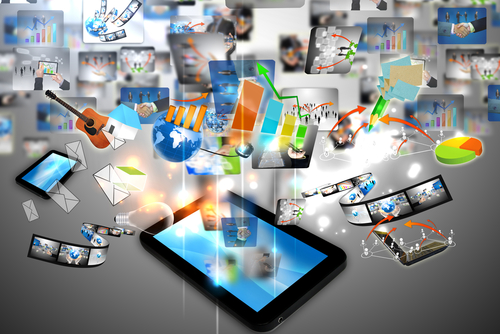
As everything, technology has its two sides of good and bad. Without a doubt, the technological revolution and development has boosted the work efficiency and productivity on a great scale. We already found water on Mars, while two decades ago the computer was still a new-born invention.
However, that rapid development had also lead to a great number of problems, coming mainly from the way we cope with this fast changing environment. One of the effects of the negative influence of technology in modern times is the increase of work related stress levels, directly impacting the work-life balance. Statistics show that workers spend on average between one and two hours more per day after working hours answering work-emails, finishing work projects, etc. Furthermore, the possibility to reach everybody at any time and the demand for immediate response dims the separation of time and focus spend on work and life, leading to lowering the satisfaction from fulfilling accordingly one’s needs.
Work related stress and the negative health and business outcomes of it affect a great number of European workplaces. Researches have been consistent in proving that the work environment characteristics have great influence on creating stress at the workplace. The great life changes of globalisation, improvement of information and communication technology, constant change of work arrangements in the last decades affected working life with constant time pressure, multitasking and the need for constant improvement for maintaining one’s status. Researches, conducted by the European Commission and Eurofound over the European working conditions for the range between years 2007 and 2012, show that 28 percent of the respondents’ mental well-being (which is equivalent of nearly 55.6 million European workers) has been negatively affected by the influence of this psychological risk. Moreover, 14 percent of the people have developed work-related health problems such as depression or anxiety. Statistics go further and further showing the great amount of “human costs” resulting from work-related stress and psychological risks.
But what does it mean to switch off with technology? How do we cope with this problem? A good first step is actually physically switching off work phones, emails and social media. The second step is to be able to unplug mentally and emotionally. This is much difficult because most of the people are used to certain routines or are feeling pressured to be always available or just being scared not to miss anything that can cause their job. It is important for both employers and employees to set expectations and limits at work that both sides can meet. Of course, it is important not to feel pressured as well to switch off. The idea is to find personal balance which is different for every individual according to the circumstances, there is no universal formula.
Another question that comes up is the problem of demand and supply. If the work environment is requiring faster and faster way of working due to the constant changes and demands to produce more and better, then won’t switching off with technology and ergo work, slower productivity and obstruct finishing tasks and reaching the set goals? A simple answer to this question is no. If working extra hours at home might be efficient in the short term, in the long term this can lead to both physiological and behavioral problems. On the contrary, we are the most creative when unwinding. Focusing on the benefits of the free time and enjoying it by being switched off from work, physically and mentally, clears the mind and boosts the individual’s productivity. Thus, finding the balance and trying to lose the feeling of worry that, if you don’t work more and harder you will lose your job, is essential.
When asked what successful people do in their free time, they rarely respond with “working extra hours”, on the opposite, they emphasize on the importance of taking maximum advantage of their leisure time. Exercising, reading, networking and volunteering, finding hobbies and spending time with friends and family are the most common ways they do that. Some even take a power nap during lunch break instead of going through their phones checking social media. Aren’t those some good ideas to learn from and make use of!
By: Iva Plocheva
